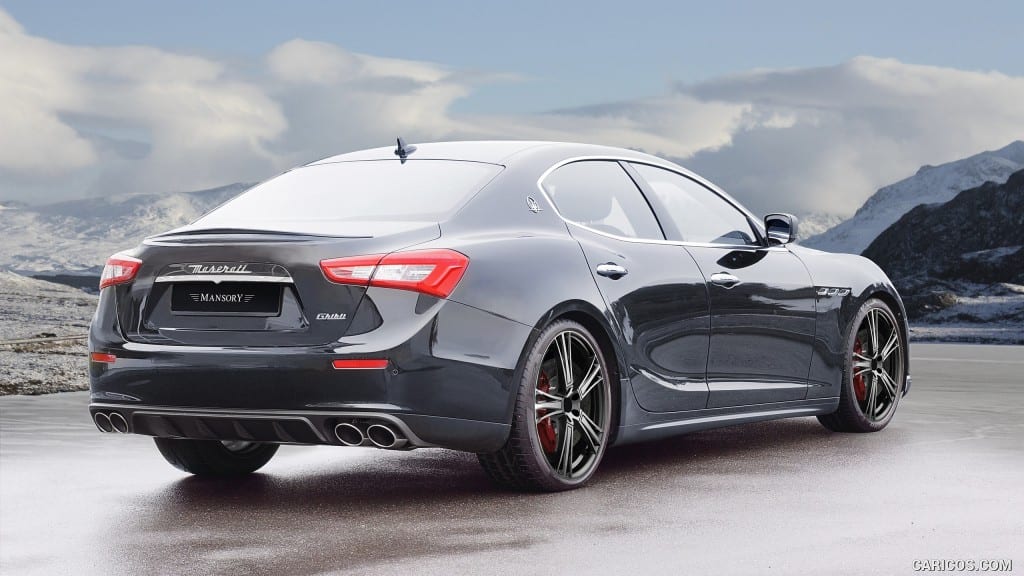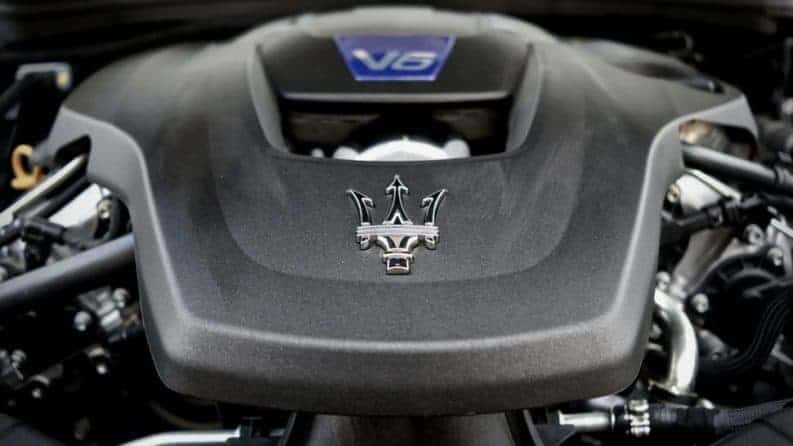As you’re cruising down the highway in your 2016 Maserati Ghibli, you may be pondering the history and background of your luxury sports car. The nameplate dates back to the mid-1960s, when the original Ghibli was shown at the 1966 Turin Motor Show. Since that time, the vehicle has evolved drastically, leading to the third-generation (and current) version.
It would take multiple posts to detail the entire history of this celebrated vehicle. Luckily, the Ghibli III (M157) has been around since only 2013, providing us with three years worth of “history” to explore. Whether you’re a current Ghibli owner or a prospective buyer, we’re sure you’ll appreciate the brand’s dedication to producing an excellent vehicle…
Background
Engineers were looking to reenter the luxury executive car segment with their Maserati Ghibli M157. The brand hadn’t produced a similar vehicle since the mid-1990 Biturbos. Considering their desire to hit production numbers approaching 50,000 units, the company understood that they needed to enter every segment of the luxury market.
Meanwhile, the Ghibli was already known as a stylish and capable car, but it was generally regarded as a coupe. Following the release of the third generation Ghibli, the nameplate was officially described as a luxury executive sedan, thus confirming the transition to a different type of vehicle.
Based off the Ghibli S Q4, the vehicle was essentially unveiled at the 2014 Paris Motor Show. The brand introduced their Ghibli Zegna Edition Concept, which touted the brand’s relationship with fashion house Ermenegildo Zegna (this followed the release of the successful Quattroporte Zegna Limited Edition). The Ghibli’s interior was completely revamped, with designers adding Poltrona Frau leather and anthracite Zegna silk fabric for upholstery. Meanwhile, the exterior included the creative triple-layer “Azzurro Astro” paint, as well as the Liquid Silver 20-inch wheels. Of course, most significant was the nameplate’s transition into an entirely different segment.
Several of these features ended up being exclusive to the concept. However, the engineers ended up retaining many of the styling cues as they produced their third-generation Ghibli. The new Ghibli also used much of the same engineering as Maserati’s sixth-generation Quattroporte, although the wheelbase was nearly eight inches shorter and the length was close to a foot shorter.
Unsurprisingly, the brand released a special edition of their Maserati for the brand’s 100th birthday. The limited-edition Maserati 100th Anniversary Neiman Marcus Ghibli S Q4 was offered via the Neiman Marcus Christmas Book gift catalogue. The exclusive model included a Cuoio tan leather interior, attractive multi-spoke wheels, and a striking black grille. With only 100 units available, customers had to dish out $95,000 for the Ghibli Neiman Marcus.
Engines
The Ghibli was initially partnered with three different engine options. The standard choice was the 3.0-liter V6 twin-turbo engine, which could pump out around 345 horsepower and 369 pounds-feet of torque. The unit allowed the Maserati to hit a top speed of 163 miles per hour, and it could reach 62 mph in only 5.6 seconds.
A petrol engine was available in the Ghibli S and Ghibli S Q4. Relying on a pair of intercoolers and direct injection, the unit was designed by Maserati but produced by Ferrari. The V6 twin-turbo engine saw several power improvements over the standard option, including 404 horsepower and 406 pounds-feet of torque. These numbers played a role in the 177 mph top speed and 0-62 mph time of five seconds flat.
Finally, the hulking 3.0-liter V6 turbo-diesel accompanied the Ghibli Diesel, the first diesel option in the nameplate’s history. The United States version actually delivers a surprising amount of power, pumping out 266 horsepower and 420 pounds-feet of torque. Top speed was 155 miles per hour, and the 0-62 time was around 6.3 seconds.
These engines were accompanied by a double wishbone suspension up front and a five-link multilink at the rear axle. The Ghibli was also equipped with the brand’s ZF 8HP eight-speed automatic transmission, as well as Maserati’s rear limited slip differential. The vehicle relies on an advanced hydraulic-based power steering system, as well as an elaborate braking system.
Meanwhile, the Ghibli S included all-wheel drive capabilities, ironically making this sporty model an ideal choice for those up north. Meanwhile, a transfer case was attached to the transmission, as well as an electronic wet clutch. Thanks to the inclusion of these mechanics, an extra 130 pounds was added to the sports car, although gas mileage and weight distribution were not impacted. These mechanics have clearly been embraced by customers, as all-wheel-drive versions of the brand’s vehicles account for 70-percent of Maserati’s sedan sales in the United States.
Safety
The Ghibli has continually been regarded as one of the safer sports cars on the market. Following its release in 2013, the Insurance Institute for Highway Safety awarded the car the best-possible rating (“good”) for moderate overlap front impact, side impact, roof strength, head restraints and seat testing. These earnings ultimately led to the Ghibli earning the exclusive distinction of being a Top Safety Pick. The Ghibli once again earned similar accolades for the 2016 model.
While the mechanics aren’t identical, it’s also worth noting that the Ghibli earned a five-star rating from the European New Car Assessment Programme.
All prospective Maserati customers are familiar with the brand’s style, so they were certainly anticipating a stylish, eye-catching design from the Ghibli. They may not have expected the powerful, impressive engine options, or maybe they didn’t assume the perfect safety scores. This new Maserati delivers in both regards. When it comes down to it, there really isn’t a more awe-inspiring luxury vehicle on the market.
The third generation Ghibli is still cruising today. The 2016 model may not only be the most impressive version of the third-generation nameplate, but it may be the most impressive in the Ghibli’s entire history. Years from now, if we decide to actually dedicate the time to exploring the entire history of the Maserati Ghibli, you can guarantee that we’ll be dedicating a large portion to the third generation, no matter what else Maserati has in store down the road.



